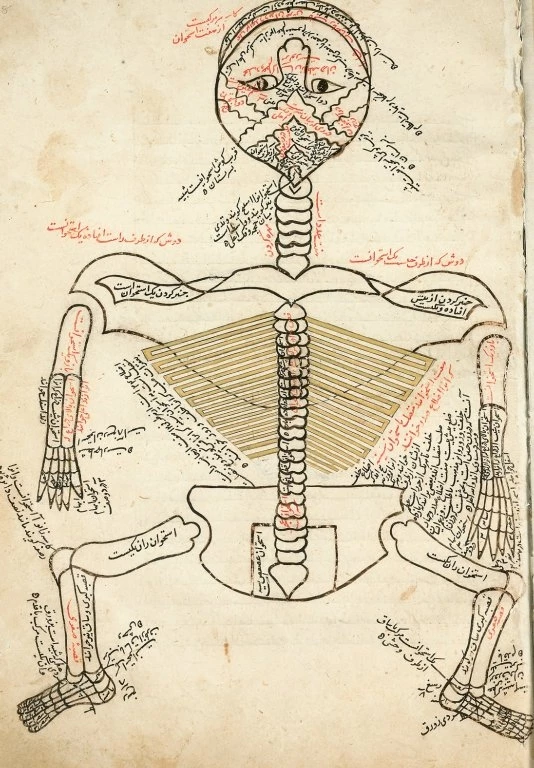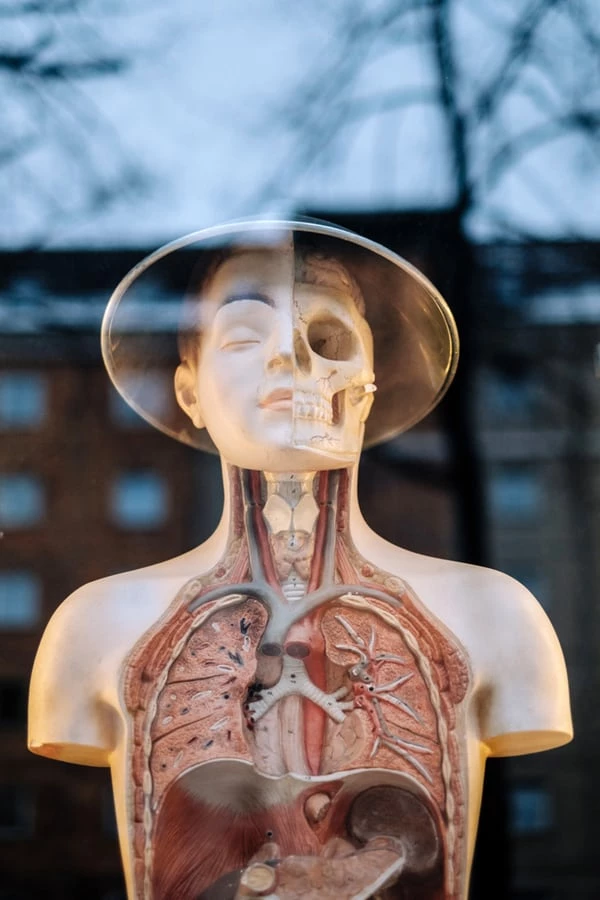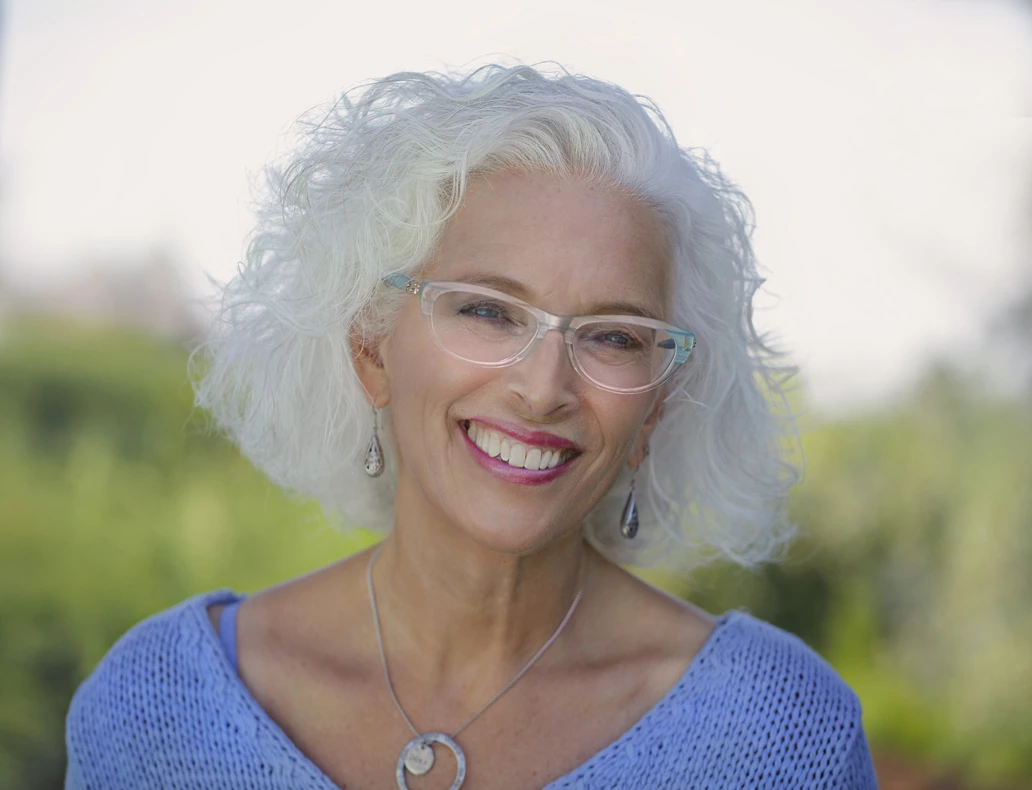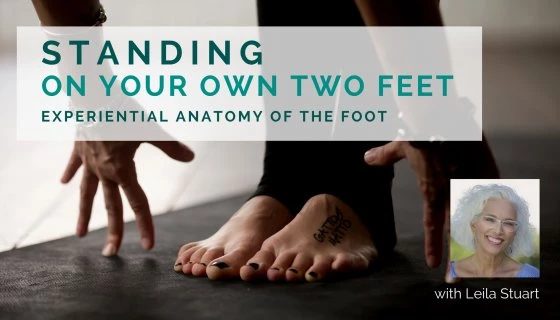Experiential Anatomy as Yoga Therapy: Learning, Feeling, Integrating

Learning anatomy becomes a rich, multidimensional event when you directly experience physical structures and systems in your own body. Learning anatomy intellectually in one or two dimensions is useful, but when you develop a felt sense of your body, you may have a direct experience of the mysteries of anatomical structures, function, and connections. Through practice, you forge a friendly and dynamic relationship between your body and mind, which can result in deeper embodiment.
Experiential anatomy is a way of learning that involves your whole being on all levels. For example, when you learn that bones are part of your internal supportive scaffolding and that standing in your bones can create comfortable, safer alignment, you can use your own body as a laboratory to experiment on how to realize and integrate skeletal stability. You can register the mental, physical, and spiritual effects of your habitual patterns of standing and moving, and then compare them with the new, experiential way of standing in your bones. According to the Koshic model, changes made on one level can affect all the other levels. 
With the practices of experiential anatomy, different aspects of the body-mind can learn to cooperate and become a harmonious part of the “family of the body.” The process is similar to family systems therapy: individual repatterning work with one family member will change the dynamics of the whole family system.
Through this process of self-inquiry, you increase awareness and become self-empowered to make more sustainable, healthy choices. This process of inquiry can be applied to any system or part of the body.
Experiential anatomy teaches the Dharma, the rightful nature and place in the order of things, of each part and system of your body. It also leads to an understanding of how your Karma, the sum effect of your past choices and experiences, has affected your experience as a physical body. By listening to your body and honoring its structure, capacity, and limitations, you can learn to live more from your wholeness.
Experiential Anatomy and Yoga Practice
When applied to yoga asana, experiential anatomy can give you an internal, felt experience of your body that shapes movement from the inside out, rather than trying to conform to an idealized image. Yoga and other movement practices become transformational when the tissues, organs, and structures of the body are acknowledged, felt, and touched by mindfulness. Stored memories and energy in the tissues can be safely released, and your innate wisdom and wholeness can be experienced.
“Teaching people to be in their bodies is a radical political act because people who are embodied cannot be controlled. Judith Koltai, Movement Educator
Learning anatomy experientially involves three different steps. 
1. Learn It
First, you learn about the chosen anatomical structure by looking at an anatomy book, a skeleton, or the many resources on the Internet and YouTube.
2. Feel It
Second, experiential anatomy practices can help you to develop your interoceptive capabilities and cultivate kinaesthetic awareness of the structure. You may focus your mind on different aspects of the structure during movement, use imagery, move in non-habitual ways, or use your hands to palpate. Your movement will likely become slower, simpler, more subtle, and mindful. All the while, you remain in open, neutral awareness of sensations.
3. Integrate It
Third, the new learning needs to be integrated into actual yoga postures and everyday activities and practiced over time, so the nervous system learns a new way of organizing movement that is more functional, safe, and connected. When you deliberately focus your attention on a particular structure, while remaining in awareness of yourself as a whole, you can make informed decisions about which ways of moving bring more ease, or sukha, and more steadiness, or sthira.
This step requires setting a baseline in supine, seated or standing position, doing the experiential anatomy practice, and then returning to the baseline position to discover what has changed in your physical body, breath, and mind. Your nervous system loves novelty and registering differences, so the effects are usually obvious.
The key aspect of this integration step involves incorporating the new learning into appropriate yoga tools, including asana, breath, or mind practices, or into the functional movements of everyday activities. What was previously unconscious is brought into consciousness, and the new way of being can be deliberately consolidated in the nervous system.
A Path to Self-Knowledge and Self-Healing
The experiential anatomy awareness can help to prevent the unconscious repetition of previous, unhelpful alignment, breath and movement habits, and guide you on a more rewarding path of self-knowledge and self-healing. Remaining faithful to the capacity of your own structure empowers you to choose an expression of a yoga pose that feels safe, integrated, and connected.
Experiential anatomy requires you to be a full participant in your healing process. The more frequently you highlight an anatomical structure in your mental landscape with intention and repeated practice, both on and off the yoga mat, the more integrated it becomes.
The challenge is that it takes tapas, determined effort, and intention. One of the rewards is an increased awareness of other koshic levels. The skill of cultivating awareness of physical habits is easily transferred to habits on different levels. For example, when you integrate the kinaesthetic awareness of standing in your bones, you may observe yourself repeating an old habit of not speaking your truth, and instead, make a conscious choice to stand up for yourself or stand your ground.
Stay tuned for more articles on specific applications of experiential anatomy.
Also, study Experiential Anatomy with Leila Stuart and YogaUOnline – Standing on Your Own Two Feet: Experiential Anatomy of the Foot.

 Leila Stuart BA, LLB, C-IAYT, is a Registered Massage Therapist and has practiced and taught yoga for over 40 years. Leila developed and taught 14 years of The Anatomy of Yoga Therapy, an innovative Yoga Therapy training, focusing on experiential anatomy, alignment, breath, and movement repatterning, and embodiment of the deeper teachings of yoga as pathways to self-healing. With a deep love and intuitive knowledge of experiential anatomy, Leila specializes in transforming academic information into somatic intelligence and life-changing experience. She is an international teacher, online educator and conference presenter, and author of Pathways to A Centered Body with Donna Farhi. She lives near Vancouver, BC. www.leilastuart.com.
Leila Stuart BA, LLB, C-IAYT, is a Registered Massage Therapist and has practiced and taught yoga for over 40 years. Leila developed and taught 14 years of The Anatomy of Yoga Therapy, an innovative Yoga Therapy training, focusing on experiential anatomy, alignment, breath, and movement repatterning, and embodiment of the deeper teachings of yoga as pathways to self-healing. With a deep love and intuitive knowledge of experiential anatomy, Leila specializes in transforming academic information into somatic intelligence and life-changing experience. She is an international teacher, online educator and conference presenter, and author of Pathways to A Centered Body with Donna Farhi. She lives near Vancouver, BC. www.leilastuart.com.




